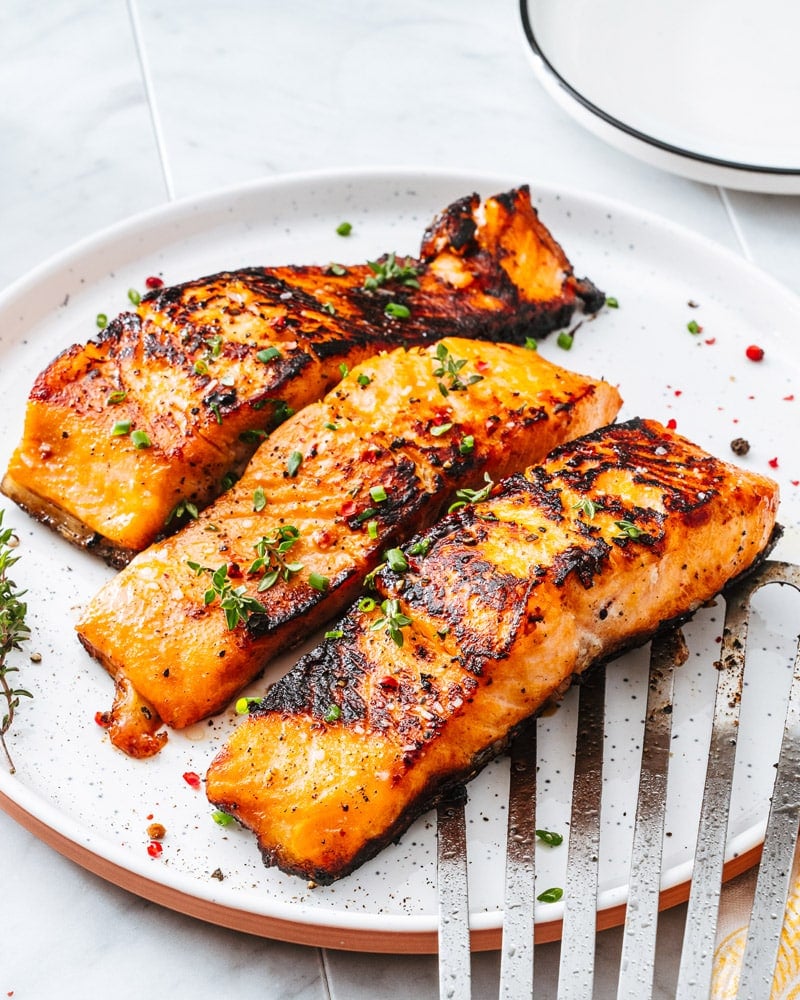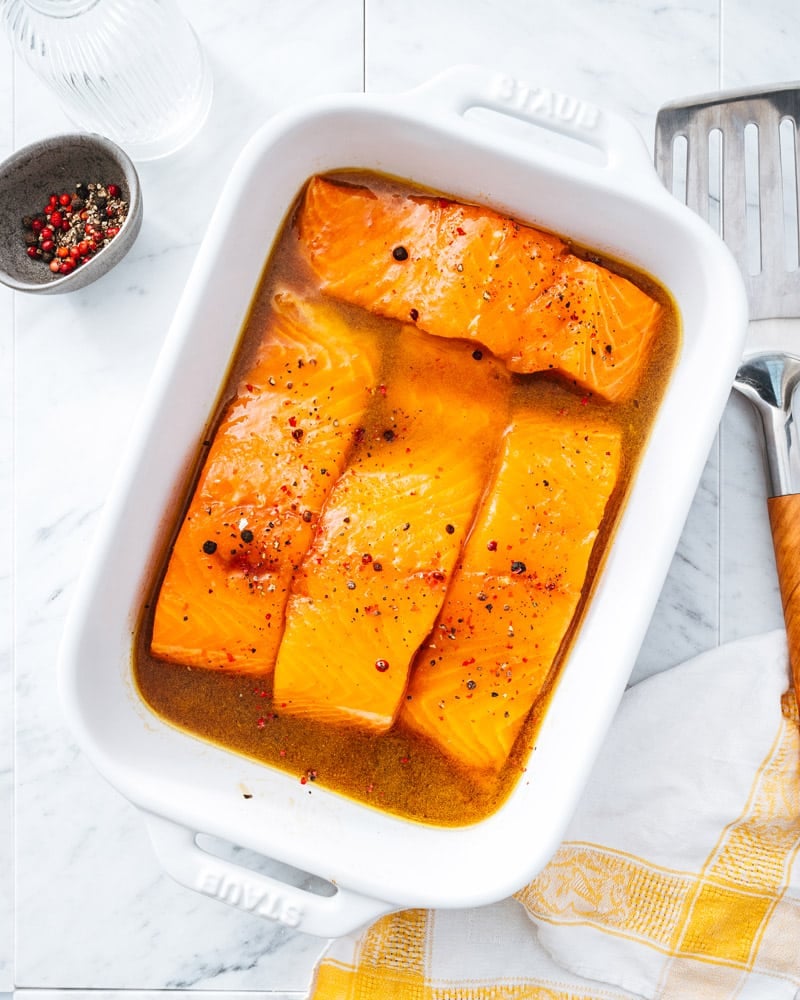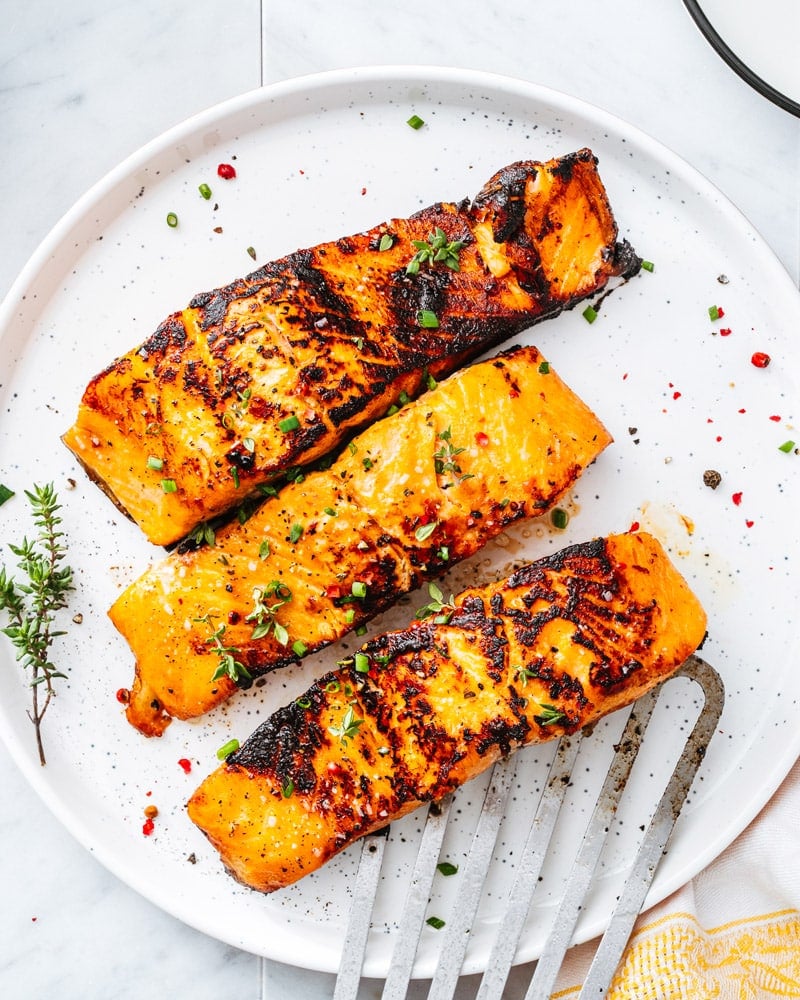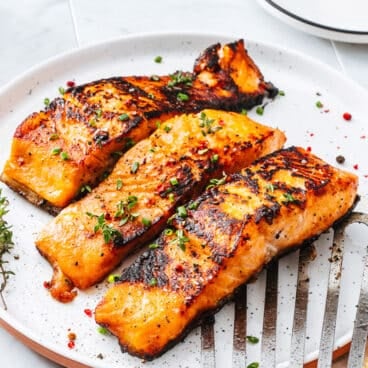Another option is making baked marinated salmon. Bake the salmon according to this recipe, then broil the top for the last 2 minutes to get it crispy and browned. However, we prefer broiling for the entire recipe because it’s quicker and you can skip the preheat time. It’s made with ingredients that you likely already have on hand, making it extremely easy to whip up. The salmon comes out tender and crisp on top, whether you try it grilled, pan seared, or broiled. Come, experience the magic!
Soy sauce Olive oil Rice vinegar Brown sugar Mustard powder Garlic Hot sauce Salt
Place the salmon in shallow dish, then pour in the marinade mixture. The recipe below makes about ¾ cup marinade which works for 1 pound of salmon. Marinate at room temperature for at least 30 minutes. You also can allow the salmon to marinate for up to 3 hours refrigerated. If you do, allow it to stand at room temperature 30 minutes before cooking. Tap off excess marinade and sprinkle with salt and pepper. Removing excess marinade is important if you’re pan searing so the pan won’t spit (it’s not as necessary for grilling, since excess marinade can fall between the grates). Cook using your favorite cooking method. Broil, pan sear, or grill the salmon.
Pan seared: Go to Easy Pan Seared Salmon. This method is fast and easy, and gets a beautiful browned top. Some drawbacks? It’s a little messy, and you have to adjust the temperature to make sure the salmon gets fully cooked. But done correctly, it’s perfection! (It’s what’s pictured in the photographs.) Broiled: Go to Quick Broiled Salmon. Broiling is perfect for salmon because it both cooks it through quickly and gives it a nice browned top. Just make sure to keep an eye on it because it cooks fast! Grilled: Go to Easy Grilled Salmon or Grilled Marinated Salmon. This is a favorite method because it’s easy and the grill infuses delightfully smoky flavor. The only drawback? It’s not always grilling season. But when it is, this one is tops.
The internal temperature should measure 125 to 130°F in the center for medium cooked salmon. If you prefer medium rare, you can stop cooking at 120°F. Make sure you insert the probe into the thickest spot. The fish will continue to cook after you remove it from the heat. To ensure full safety, the FDA recommended temperature for seafood is 145°F, or well done. Or, flake it with a fork to assess doneness. Cook the fish until the salmon just starts to flake when pricked with a fork. Either way, be careful not to overcook. There’s nothing worse than a dry piece of fish. Keep an eye on it and don’t overdo it!
Find 1 to 1 1/2-inch thick fillets. Thick pieces of salmon are perfect for this marinade; you might find it labeled center cut at the store. The recipe also works with thinner fillets. Look for wild caught salmon. Fish that is wild caught in your country is usually a sustainable choice. (There are also quality options in well-regulated farms; see Seafood Watch Consumer Guide.) Buy fresh salmon. Salmon that’s fresh from the fish counter usually has the best flavor. Frozen can work too, but try to find highest-quality frozen salmon. Avoid big economy-sized bags, which is generally thinner and can have a fishy flavor.
Try grains like Spinach Rice, Lemon Rice, Pesto Rice, Basil Rice, Farro, or Lemon Orzo Go for sauteed veggies like Peas with Lemon, Sauteed Green Beans, Skillet Fried Corn, Green Beans Almondine, or Sauteed Broccolini Make roasted veggies like Lemon Baked Asparagus or Best Roasted Vegetables Opt for salads like Apple Slaw, Orzo Pasta Salad, Lentil Salad or 60 Best Salad Recipes
5 from 1 review







